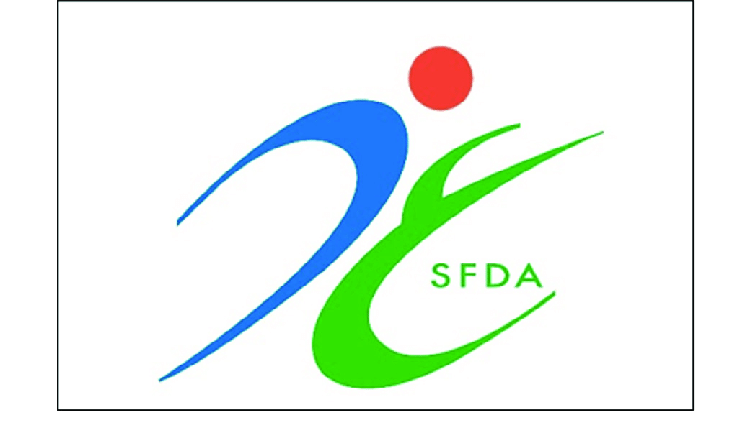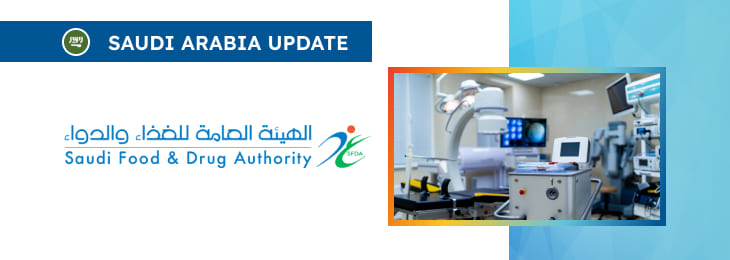The article outlines the basics of the regulatory framework for innovative medical devices.

Table of content
The Saudi Food and Drug Authority (SFDA), the country’s regulatory agency in the sphere of healthcare products, has published a guidance document dedicated to innovative medical devices. The document provides a general overview of the applicable regulatory requirements, as well as additional clarifications and recommendations to be taken into consideration by medical device manufacturers and other parties involved in order to ensure compliance.
At the same time, provisions of the guidance are non-binding in their legal nature, nor are they intended to introduce new rules or impose new obligations. The authority also reserves the right to make changes to the guidance and recommendations provided therein, should such changes be reasonably necessary to reflect corresponding amendments to the underlying legislation.
Introduction
Innovative Medical Devices play a transformative role in healthcare by enhancing patient care and supporting healthcare providers in delivering quality service. However, delays in accessing these advanced technologies can hinder their potential, especially those with superior efficacy in diagnosis, treatment, or monitoring.
To address this, the SFDA has established a specific pathway designed to expedite the regulatory process for these devices. This pathway ensures that patients and healthcare professionals can access advanced medical technologies that offer significant improvements over existing products, without compromising safety and effectiveness.

Purpose
The primary objective of this guidance is to delineate the criteria for designating a medical device as innovative, outline the review processes involved, and describe the features of the dedicated pathway. This document aims to clarify the requirements for applying via the Innovative Medical Devices Pathway and provide a comprehensive explanation of the submission process.
In such a way, it provides a roadmap for developers, manufacturers, and other stakeholders interested in bringing new medical technologies to the market in a streamlined manner.
Scope
This guidance document is directed towards innovators, developers, manufacturers, and authorized representatives seeking to obtain a Marketing Authorization for Innovative Medical Devices. The document defines what constitutes an innovative device, as elaborated in Annex D: Definitions and Abbreviations.
Regulatory Background
The present guidance is based on the provisions of Article 9 of the “Law of Medical Devices”, as per the Royal Decree No. (M/54). This decree authorizes the SFDA to exempt innovative devices from certain conditions and procedures for obtaining marketing authorization, provided that safety and intended performance remain uncompromised.
This regulatory flexibility is intended to support the introduction of pioneering medical devices while ensuring that they meet necessary safety and performance standards.
Innovative Medical Devices Pathways
According to the document, the journey of an innovative medical device involves various stages, beginning with the conceptualization of the innovative idea, followed by multiple iterations and refinements. This developmental process considers pre-clinical aspects and may include a request for SFDA product classification to ensure the device’s safety and effectiveness.
To meet the Essential Principles for Safety and Performance (EPSP), applicants must demonstrate that the device fulfills these standards throughout the pathway. The process itself comprises two main phases: Pre-Submission Assessment and Priority Assessment for Marketing Authorization. A flowchart in the guidance document illustrates the pathway process for applicants.
Pre-MDMA Application Assessment
The initial phase, known as the Pre-Submission Assessment, is designed to provide free, ongoing feedback and guidance based on SFDA regulatory expectations. This phase is intended to assist applicants in preparing their technical files in compliance with regulatory standards before formally applying for marketing authorization.
The aim is to foster a collaborative relationship between the SFDA and the applicants to streamline the application process and address potential issues early on.
Priority MDMA Application Review
In the second phase, the Priority MDMA Application Review, innovative devices are prioritized in the review queue for marketing authorization applications. While this priority treatment advances the start of the review process, it does not shorten or reduce the thoroughness of the assessment.
Instead, this approach allows the SFDA to initiate the comprehensive evaluation of the novel technology promptly upon receiving the technical file, ensuring timely access to critical innovations.
Innovative Medical Device Designation Criteria
This section explains the eligibility criteria for a medical device to be designated as innovative.
To qualify, a device must meet certain conditions:
- The device features unique technology, use indications, or performance characteristics with no equivalent on the local or global market.
- It offers a considerable clinical or medical advantage over existing treatment options.
- Other criteria may be defined by the SFDA and published on its website.
Applicants are required to justify how their device meets these criteria, and the SFDA may request further information if necessary. The outcome of the designation application will determine whether the device is eligible for priority review.
SFDA Facilitation for Innovative Medical Devices
As further explained in the document, recognizing the inherent complexities and potential risks associated with novel technologies, the SFDA has established various facilitative measures to aid applicants and ensure a smoother review process. These measures include maintaining open communication with applicants and prioritizing the review of innovative devices to facilitate market entry for technologies with significant clinical benefits.
In order to streamline and facilitate the regulatory procedures for innovative medical devices the authority applies:
- Preliminary Regulatory Feedbacks: This free service offers applicants ongoing guidance and feedback prior to submitting a Marketing Authorization request. The Pre-Submission Assessment stage helps applicants understand SFDA requirements, regulatory expectations, and any specific considerations for the proposed device, aiding in thorough preparation.
- Prioritizing Evaluation: Innovative Medical Devices are placed at the top of the review queue for marketing authorization requests, ensuring they are reviewed ahead of other submissions. The SFDA’s priority assessment accommodates the novelty of these devices through rigorous reviews that begin promptly upon file submission, although review standards and duration remain uncompromised.
- Granting Conditional Marketing Authorization: In cases where valid clinical evidence is available, the SFDA may grant conditional authorization, allowing the device to enter the market under specific post-market surveillance requirements. Once the device fulfills all necessary SFDA MDMA requirements, full marketing authorization may be granted.
- Release Announcement: Upon granting MDMA, the SFDA may publicly announce the authorization of an innovative medical device through its website and other channels to inform the healthcare community and public of the latest advancements available.
Requirements and Procedures
Applicants seeking to apply through the Innovative Medical Devices Pathway must comply with the following requirements:
- Comply with the Law of Medical Devices and its Implementing Regulations.
- Meet the Essential Principles for Safety and Performance.
- Fulfill the Innovative Medical Device Designation Criteria.
Applicants are obliged to submit the necessary “Application Form for Innovative Medical Device” via the specified email or the “GHAD” system as applicable. The SFDA will review applications for eligibility, request additional documentation if needed, and notify applicants of the status of their applications.
In the Pre-Submission Assessment Pathway, SFDA will issue a completion letter upon finishing the preliminary review, after which applicants can proceed to request Priority MDMA Application Review. During this phase, applicants must submit all relevant forms and additional clarifications as required, following which the innovative device will be evaluated under the distinctive pathway facilitation measures.
Conclusion
In summary, the present SFDA guidance provides a structured overview of the existing legal framework for Innovative Medical Devices, highlighting the pathway phases, designation criteria, facilitative measures, and application requirements to streamline the regulatory approval process for advanced medical technologies.
How Can RegDesk Help?
RegDesk is an AI-powered Regulatory Information Management System (RIMS) designed to simplify global compliance for medical device companies. With regulatory intelligence covering 120+ markets, RegDesk helps you prepare and publish global submissions, manage standards, conduct impact assessments, and stay ahead of regulatory changes all from a single, centralized platform. Expanding into new markets has never been easier.

